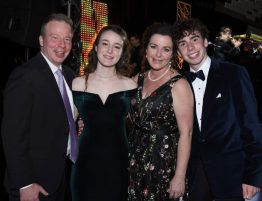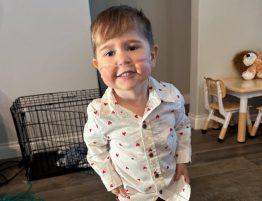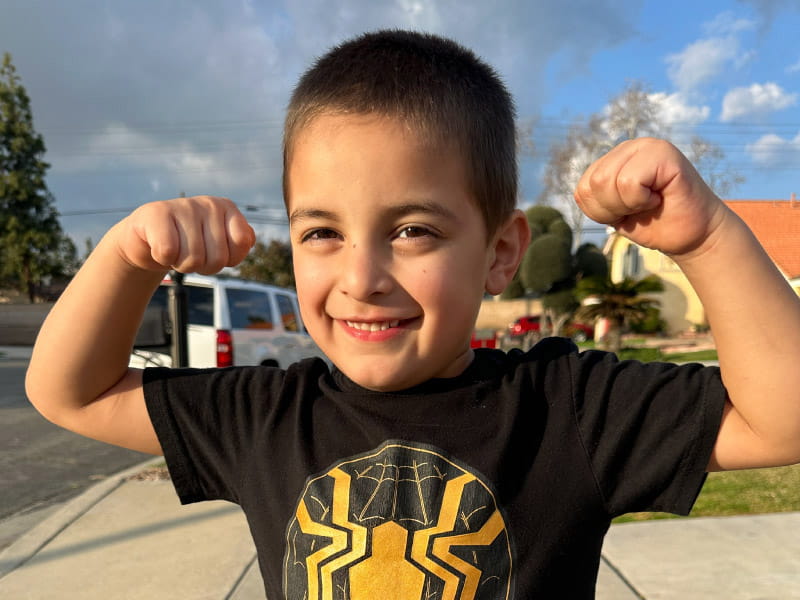
After Cecilia Galeana gave birth to her second child, Elias Soto, a pediatrician performed standard newborn tests. Listening to his heart, the doctor heard a whooshing and swishing sound. Elias had a heart murmur.
It could be hypertrophic cardiomyopathy, or HCM, the doctor said. It’s a condition in which abnormally thick heart muscle makes it hard for the heart to pump blood. Cecilia and her husband, Rafael Soto, went home with a pediatric cardiologist referral.
For the next few months, the couple settled into life with two kids at home in Ontario, California. Elias met his big sister, Zulay, who was 3.
At the cardiologist appointment, 4-month-old Elias had an electrocardiogram, or EKG, to measure the electrical signals in his heart and a heart ultrasound, known as an echocardiogram.
Results confirmed the pediatrician’s suspicion: Elias had HCM. It’s the most common cause of sudden cardiac death in people under age 35.
Cecilia and Rafael panicked. Before they had Elias, they’d never heard of the disease. They had a long list of questions: How did he get it? When? Why?
“We took it day by day, learning off of the doctors and not so much the internet,” Cecilia said.
Elias’ cardiologist referred the family to Dr. Jennifer Su, a cardiologist and co-director of the Cardiogenomics Program at Children’s Hospital Los Angeles Heart Institute.
The treatment plan was straightforward. Doctors would closely monitor Elias to make sure his heart continued to function properly, with an annual EKG and echocardiogram to see how blood was flowing through his heart.
Since HCM is a genetic condition, Su suggested that Elias and his parents undergo genetic testing.
The suggestion that either of them had a heart problem seemed jarring. Both felt fine and were lifelong athletes. Cecilia played soccer in high school, and Rafael did football, soccer and shot put.
“It’s very hard to find out suddenly that your child has a lifelong heart condition, and it takes a lot of courage to take that next step to see if it’s potentially familial,” said Su.
As it turned out, not only did Elias and his father share the disease-causing genetic mutation, further testing showed that Rafael had severe HCM.
His heart muscle was so thick that doctors called him a “ticking time bomb” for cardiac arrest.
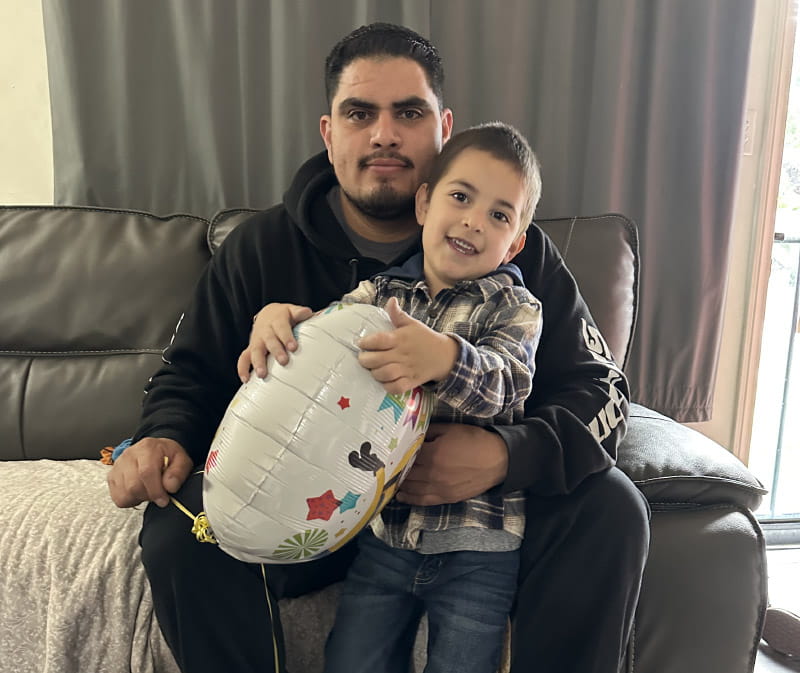
Rafael’s doctors told him to take it easy. But he led an active lifestyle. At 26, he didn’t want to slow down.
One option was to get an implantable cardioverter defibrillator, or ICD. It’s a device that helps prevent sudden death by monitoring the heart rhythm and delivering a shock, if needed, to restore a normal heartbeat.
Rafael wasn’t sure he wanted a device inside his body.
For the next five years, he kept up with his regular activities.
Meanwhile, Zulay got tested, too. She also shared the genetic mutation and had a mild case of HCM.
Cecilia became pregnant again when Elias was 1. An ultrasound looked OK. To test for HCM, her obstetrician suggested an amniocentesis, a prenatal test that takes amniotic fluid from around the baby in the uterus. The procedure involves a small risk of miscarriage. Cecilia declined.
After baby Emilia was born, tests showed she also carried the gene.
Now that Rafael had three kids, he kept hearing in his head the doctor’s phrase about a “ticking time bomb.” He decided to get the ICD.
He received it in April. He’s back to work as a diesel mechanic and he hopes to return to the gym soon.
“God forbid he goes into cardiac arrest, hopefully this device could save his life,” Cecilia said.
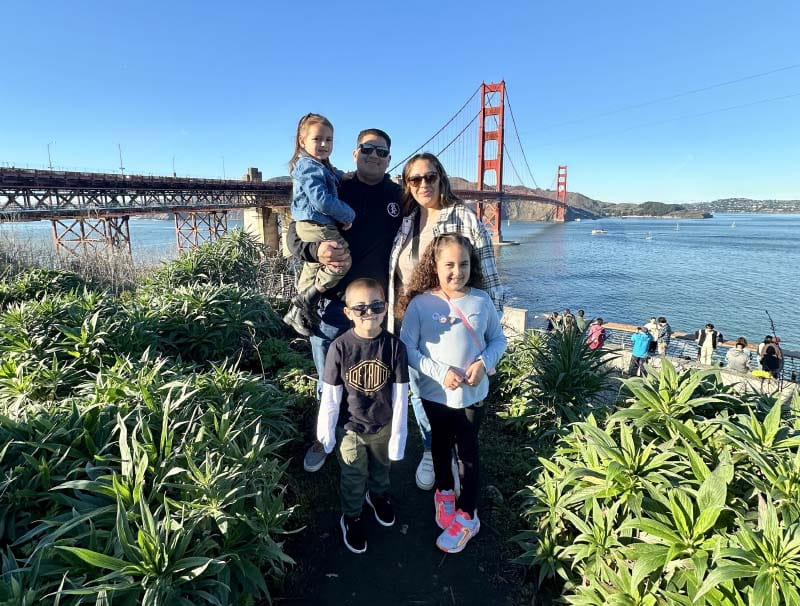
Elias, who’s now 5, hasn’t had any HCM symptoms and his case has stabilized, Su said. Still, he takes a beta blocker to help prevent arrhythmias, or abnormal heartbeats. He’s also participating in an observational clinical trial that’s gathering data on children with genetically confirmed HCM to see how they progress.
At 8 or 9 – when Elias can safely use a bike or treadmill – he’ll do more tests, including an annual stress test and an MRI of his heart to gauge his risk for cardiac arrest.
“If it starts to look like Elias has an increased risk for sudden death, we’ll discuss the risks and the benefits of an ICD and putting one in,” Su said.
Zulay, now 8, and Emilia, who’s 4, get annual heart scans, too. Puberty could spark HCM symptoms and exacerbate Elias’ case. Or not. It’s wait and see, the doctors said.
In the meantime, the Soto kids are active. Elias and Zulay do jujitsu. Elias and Emilia play soccer. Emilia also wants to try gymnastics or Mexican folk dancing.
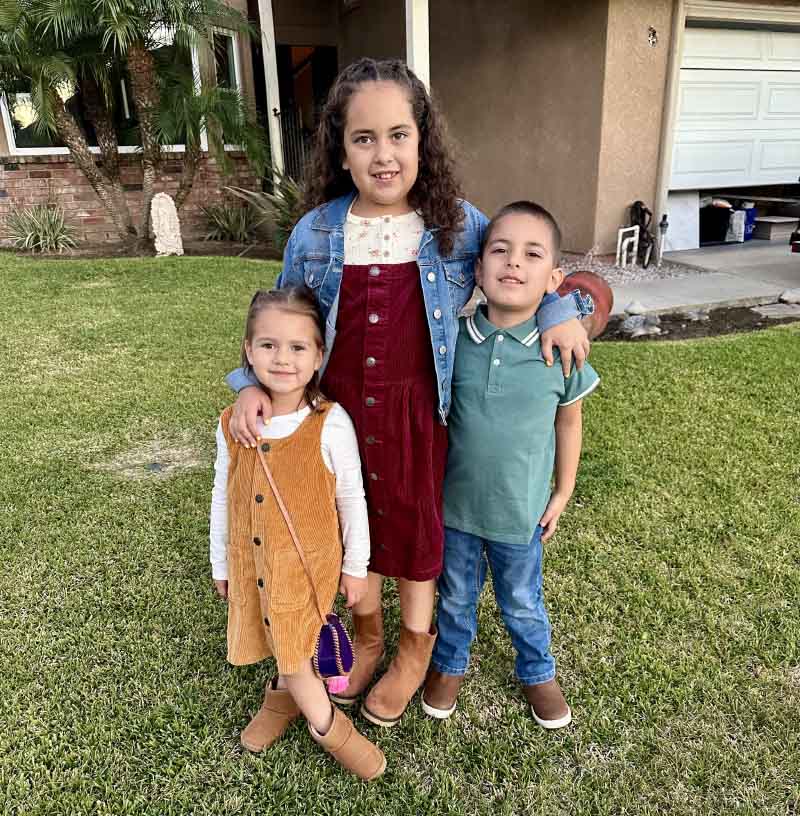
“We don’t stop our kids from being kids,” Cecilia said. “Don’t stop doing the things you want or need to do if you can, that’s generally our motto.”
As the only family member without HCM, Cecilia has struggled with worries about her husband and children. Prayer has helped. “We just pray every day and hope and wish for the best,” she said. “We’re blessed every day to be given another day of life.”
Stories From the Heart chronicles the inspiring journeys of heart disease and stroke survivors, caregivers and advocates.

